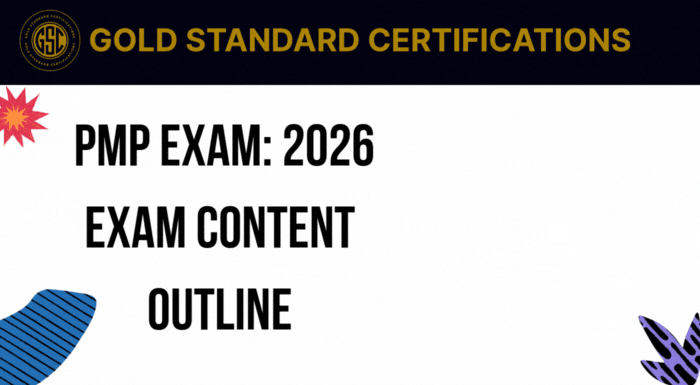Project Management in IT: Theory vs Reality (2025 Insights)
Discover the gap between project management theory and reality in the IT industry. Learn why projects fail, what really works, and how certifications like PMP & PMI-ACP prepare leaders for real-world IT challenges.

Project Management in IT: Theory vs. Reality
Introduction
If you’ve ever managed an IT project, you know this truth: theory looks perfect, but reality feels messy.
On paper, project management in IT is all about structured planning, well-defined deliverables, and timely execution. Yet, according to McKinsey, 45% of IT projects run over budget, 7% go over schedule, and 56% deliver less value than expected.
Why does this gap exist? And more importantly, how can IT project managers thrive in a world where unpredictability is the only constant?
Let’s peel back the layers of project management theory vs. reality in IT, and discover what future-ready project managers must do to succeed.
1. The Theory of Project Management in IT: Clean, Predictable, and Structured
In theory, IT project management follows structured frameworks:
- Clear objectives – SMART goals defined in a Project Charter.
- Stable scope – Agreed deliverables, minimal changes.
- Defined roles – Project manager, team, and stakeholders are all aligned.
- Predictable timelines – Milestones, schedules, and roadmaps in place.
- Methodology adherence – Waterfall, Agile, or Hybrid chosen upfront.
- Risk and change management – Documented registers and approval systems.
- Communication plan – Smooth stakeholder buy-in through meetings and reports.
It’s a tidy world. A world where the Gantt chart tells the truth, stakeholders stay aligned, and success is predictable.
But anyone who’s lived through a digital transformation, cloud migration, or large-scale software deployment knows this isn’t reality.
2. The Reality of IT Projects: Fast, Messy, and Unforgiving
But the IT industry deals with unique complexities that derail theory.
Reality Check 1: Scope Creep is Unavoidable
- Clients frequently change requirements, especially in software development and digital transformation projects.
- Technology evolves mid-project, forcing re-alignment.
Example: A banking app project planned with waterfall suddenly had to integrate AI fraud detection after launch delays, doubling the timeline.
Reality Check 2: Timelines Rarely Match Reality
- IT projects face hidden dependencies such as legacy system integration and vendor delays.
- Testing and quality assurance often take twice as long as estimated.
McKinsey found that IT infrastructure projects run 45% over budget and 7% over time on average.
Reality Check 3: Methodologies Clash in Hybrid Environments
- Teams often mix Agile (for dev teams) with Waterfall (for client governance).
- Theory suggests hybrid is smooth; in reality, it often causes misalignment.
A healthcare IT project failed because IT wanted Agile sprints but stakeholders demanded fixed delivery dates.
Reality Check 4: Communication Gaps Kill Projects
- In global IT teams, communication suffers due to time zones, culture, and technical jargon.
- Reports and dashboards don’t always translate to actionable insights.
Stand-ups in Agile teams often become status updates instead of problem-solving sessions.
Reality Check 5: Project Managers Become Firefighters
- Instead of leading strategically, PMs in IT often spend time resolving bugs, vendor issues, or client escalations.
- In reality, PMs must juggle technical knowledge, leadership, and stakeholder politics.
3. Why IT Project Management is Different
Compared to construction or manufacturing, IT projects are uniquely fragile:
- Technology moves too fast. Mid-project, new tools emerge that shift expectations.
- Deliverables are intangible. You can’t “see” progress until software is tested.
- ROI is delayed. Business value often appears months after deployment.
- Dependencies are scattered. IT projects rely on cloud providers, consultants, vendors, and external APIs.
Theory assumes stability. Reality in IT is permanent disruption.
4. Bridging the Gap: How PMs Can Align Theory with Reality
The best IT project managers don’t fight reality. They adapt to it.
1. Treat Hybrid as an Operating System, Not a Methodology
Stop rigidly choosing Waterfall vs. Agile. The future belongs to those who can tailor a hybrid model to each phase of the project. Agile for dev cycles, predictive for compliance-heavy stages.
2. Put Generative AI to Work
Generative AI can draft charters, flag risks, predict bottlenecks, and even prepare client updates. Smart PMs use it not as a replacement, but as a copilot for decision-making.
3. Build Technical Fluency
Today’s IT PM cannot afford to be “non-technical.” Understanding the basics of cloud, cybersecurity, and DevOps is critical for credibility and informed decision-making.
4. Invest in Leadership Skills
The hardest problems in IT aren’t technical; they’re human. Stakeholder politics, cross-functional conflicts, and misalignment kill more projects than bad code ever did. Emotional intelligence and negotiation are now mission-critical.
5. Future-Proof with Certifications
PMP certification equips PMs to navigate predictive, agile, and hybrid models. PMI-ACP builds deep Agile expertise. Together, they position IT PMs as versatile leaders ready for disruption.
According to PMI’s Talent Gap Report, demand for PMP-certified IT PMs will grow by 33% in North America by 2025.
5. The Future of IT Project Management (2025–2030)
- Generative AI copilots will assist PMs in scheduling, risk, and reporting.
- Hybrid methodologies will dominate IT projects.
- Soft skills over technical skills: stakeholder influence, negotiation, and leadership will be the career accelerators.
- PMP and PMI-ACP certified leaders will become the gold standard for IT organizations seeking transformation success.
Conclusion
The difference between theory and reality in IT project management is massive, but it’s also where opportunity lies.
The most successful project managers in IT will be those who:
- Embrace hybrid methodologies.
- Leverage AI for efficiency.
- Build both technical and leadership skills.
- Invest in globally recognized certifications such as PMP and PMI-ACP.
The IT industry doesn’t need more process police. It needs leaders who can turn chaos into clarity.
Ready to bridge theory and reality in IT project management?
Get certified with Gold Standard Certifications’ PMP Training and build the skills global IT employers are demanding in 2025.
Also explore PMI-ACP training to master agile and hybrid IT project delivery.















